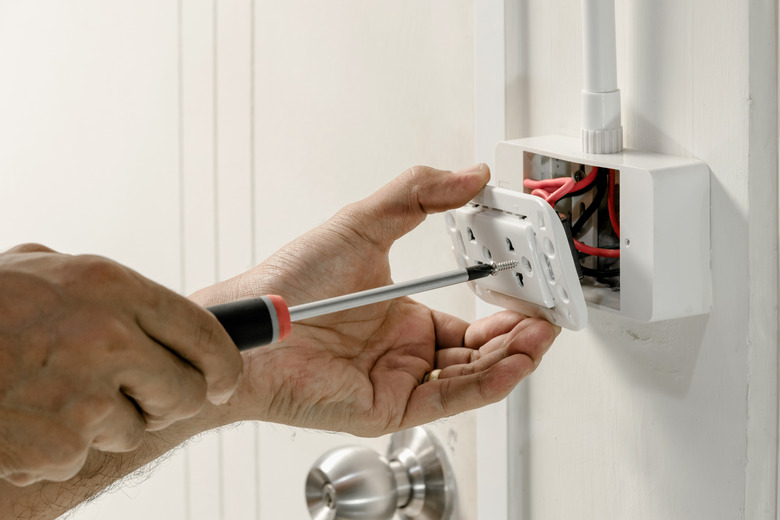Basic DIY Safety Tips For Electrical Repairs
We may receive a commission on purchases made from links.
Working with electricity is hazardous. That's one reason why electricians charge more than most other contractors, and the high cost, in turn, motivates many homeowners to bypass the pros and do their own wiring. Building departments usually have no objections to competent work done by homeowners on their own property, provided all the permits are pulled and inspections duly completed. And many basic tasks, such as replacing outlets or installing lights, don't require permits at all. If you feel you have the skill and knowledge to do your own electrical work, go for it. Just remember a few important safety guidelines to avoid getting shocked or starting a fire.
Tip #1: Always Turn Off Circuit Breakers
Tip #1: Always Turn Off Circuit Breakers
Turn off the circuit breaker controlling the fixture you want to work on before uncovering the wires or terminals — even if all you want to do is tighten a loose connection on a switch or light fixture. You may be using rubber-handled tools, and you may be wearing protective gloves and shoes, but your screwdriver tip isn't insulated and might inadvertently short a circuit.
The resultant arc is hot enough to melt plastic and even start a fire — and if you're standing on a ladder, you could lose your balance from sheer surprise. If the circuit breaker is shut off, you don't have to worry about someone accidentally flipping on the switch while you're in the middle of making a connection. You'll work more calmly, and you'll do a better job.
Tip #2: Use Your Voltage Tester
Tip #2: Use Your Voltage Tester
Before touching any exposed wire or terminal with your screwdriver or pliers, use your voltage tester to make sure the power is off. The circuitry in many homes, especially older ones, is often a combination of original wiring and wiring that has been added after the fact, and breakers may be mislabeled. The breaker you turned off may not be the one that controls the fixture you're servicing. Testing the fixture may seem like an unnecessary step, but you'll be relieved that you didn't forge ahead blindly if you get a positive reading on your tester when you weren't expecting one. You won't be the first person to have ever experienced this.
Tip #3: Update the Panel Index
Tip #3: Update the Panel Index
The panel is the control center for your home's electrical circuitry. During installation, it's common practice to label the circuits that each breaker controls on the panel door, but these labels have a way of fading or falling off. Moreover, they go out of date whenever electrical renovations are made. It's a great idea to double-check each breaker to make sure it controls the circuits it's supposed to and to update the index as needed.
You can do this by flipping off each breaker in turn and noting which devices in the house go off. Before flipping a breaker, make sure that your shoes are dry or, even better, that you're wearing rubber-soled shoes. Stand to one side when flipping a breaker on in case a short circuit occurs and the breaker sparks.
Tip #4: Practice Making Wire Connections
Tip #4: Practice Making Wire Connections
Light-duty switches and outlets come with self-clamping push-in terminals, but you can't always rely on these, and you won't find them at all on devices designed for 12-gauge wire. Since you can't avoid connecting wires manually, it's a good idea to hone this skill. To get a secure connection, you make clockwise bend on the end of the wire using pliers, then hook the wire around the terminal and tighten the screw.
Since you're turning the screw clockwise, the wire will be drawn around the screw as you turn it. Don't make the mistake of making the bend in the opposite direction, or the rotation of the screw will actually force the wire off the terminal, and the resultant loose connection could overheat the device and start a fire.
Tip #5: Get Your Tools On
Tip #5: Get Your Tools On
Electrical work calls for a set of specific tools, including pliers, wire strippers, screwdrivers and a utility knife. All should have rubber or plastic handles to protect you in case you inadvertently touch a live wire. Keep these tools in a dedicated tool box along with other supplies you need, including electrical tape, wire connectors, a voltage tester and a flashlight or head lamp. You'll be ready to tackle small repairs safely at a moment's notice.

